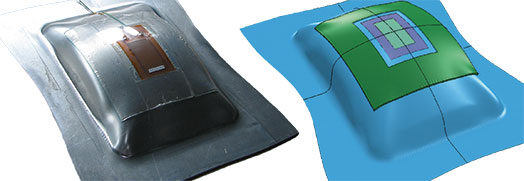More efficiency due to functional integration

The desire to achieve maximum functionality with as few components as possible is a significant driving force for creative engineers. Functional integration is undisputedly the decisive methodological approach for achieving sustainable resource efficiency. Component geometry and specific material properties are locally optimally adapted to each other. Despite complex requirements and high functional density, every function is realized only once at the right location and the right time. This approach is applied in the automotive industry under the heading mixed construction. It is regarded as a development trend for realizing high levels of lightweight construction.
The Fraunhofer IWU methodically advances functional integration under the following four aspects:
- Complexity: New technologies of additive manufacturing also known as 3D printing are applied in order to reach a new level of geometric variability, thus implementing functional integration in the narrowest installation space. In addition to widespread pure plastic or metal printing, fiber plastic composites can even be directly printed and specifically applied at the Fraunhofer IWU.
- Simplicity: By integrating sensors and actuators made of smart materials, self-adaptation to variable ambient conditions becomes possible, resulting in drastic reduction of component complexity.
- Multifunctionality: Hybrid structures offer an expansion of functions in addition to their lightweight potential.
- Technological variety: Tapping into textile technologies for fiber plastic composites facilitates high variability of geometry and properties.
 Fraunhofer Institute for Machine Tools and Forming Technology
Fraunhofer Institute for Machine Tools and Forming Technology